What is the GAPS Diet?
The GAPS Diet is a temporary diet that eliminates hard to digest carbohydrates, toxic food additives, and foods that are difficult to digest. These foods are removed to heal the gut. By healing the gut, chronic conditions such as autism, celiacs, food allergies, environmental allergies, eczema, and autoimmune disorders are all healed.
GAPS starts with a more restrictive, but intensely healing GAPS Introduction Diet, and then moves on to Full GAPS, with all the foods listed below. The entire diet is outlined in the book Gut and Psychology Syndrome by Dr Natasha Campbell-McBride.
Fanatic attention to detail needs to be made on the diet, it’s best to not purchase anything but real whole ingredients. Even a few grams of sugar in commercial yogurt or additives in prepared meat or bean products can completely prevent healing. There is lots you can eat on GAPS, but it has to be prepared from either a very trusted source, or in your own kitchen.
What can you eat on the GAPS Diet?
Meat
When starting GAPS, it’s important to find a good quality source of meat. Grassfed or pastured is important, and contains the balance of omega 3 to omega 6 fatty acids that are ideal for healing. Meat on GAPS is eaten often, and meat stock is a daily requirement on the GAPS diet. Animal fats are allowed as well, as long as they are pure fat without additives or hydroginated oils.
Vegetables
Non starchy vegetables (potatoes, sweet potatoes, and corn are not allowed) are allowed on GAPS and are another staple. Just a roast surrounded by chunks of veggies and tossed in the oven or crockpot makes an easy, nourishing, and delicious GAPS friendly meal.
Fruit
Fruit is a favorite snack on GAPS. Dr. Natasha recommends eating it between meals. Fruit can be eaten raw, cooked into apple sauce, dehydrated, or cut into fruit salad. Some people do better off of fruit, but fruit is allowed on full GAPS.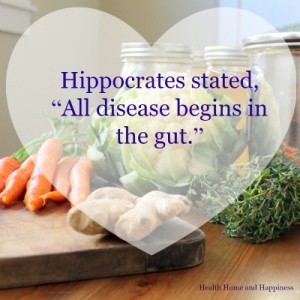
Eggs
When we first started GAPS we went through so many eggs that our ‘egg lady’ even made deliveries to our apartment, driving on ice covered Montana roads to get to us. I think we single handedly supported her flock :) Eggs from chickens on pasture, and ideally eating GMO free feed, are another staple on the GAPS diet.
Cultured Dairy
Dairy on GAPS is cultured (turned into yogurt, kefir, or aged cheese) to use up the lactose. Lactose is one of the carbohydrates that will feed the pathogenic bacteria, so it’s eliminated on GAPS.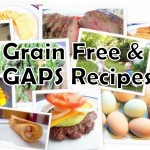
Honey
Honey is the only sweetener besides fruit (dates work really well for sweetening too) that is allowed on GAPS. Maple syrup, sugar, corn syrup, and other sweeteners are not allowed because their chemical makeup takes longer for the body to break down, so they aren’t immediately absorbed. Unabsorbed carbohydrates travel down the digestive tract and feed pathogenic bacteria, which is what we are trying to avoid.
Non Starchy Beans
Navy beans are allowed on GAPS (they’re the small white ones). Some people have success with other beans, making sure they are prepared from scratch and soaked before cooking. I like to cook my beans in chicken stock for added nutrition.
Coconut, Nuts, and Seeds
Nuts and seeds (and coconut flour) are how we make baked goods on GAPS. you can make some awesome sunflower seed crackers, almond flour or coconut flour muffins, and nutbutter brownies on the GAPS diet. See my GAPS Recipes page for recipes. Coconut and palm oil are allowed and are great for those who aren’t able to tolerate dairy yet.
Seasonings and Salt
Dried herbs, sea salt, and black pepper are allowed on the diet and make plain food so much more interesting! Simple whole foods with healthy fats and fresh seasonings make delicious meals.
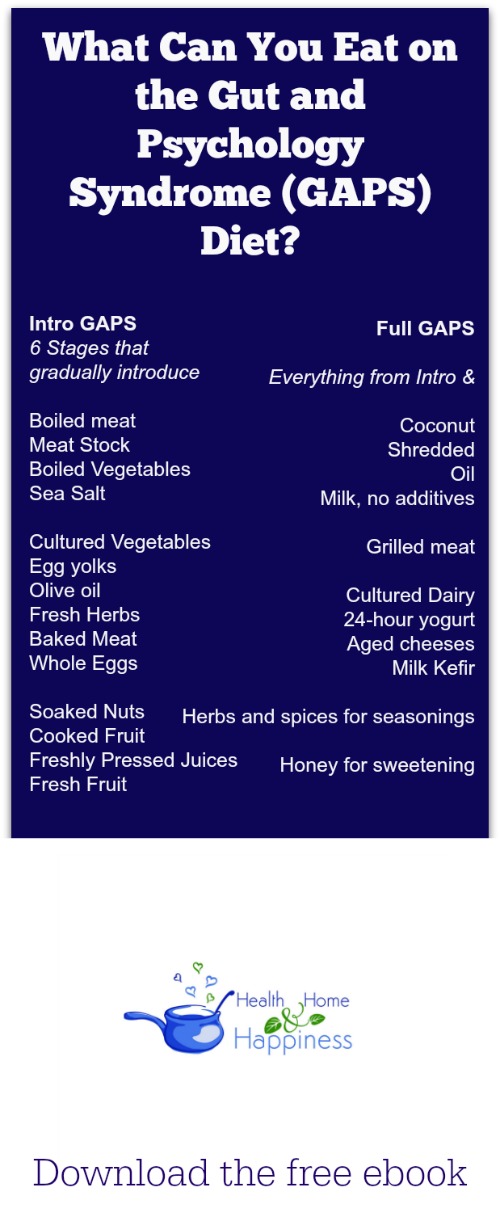
Learn how to heal leaky gut

60-page ebook of all my best GAPS Diet (Gut and Psychology Syndrome) articles all in one place.



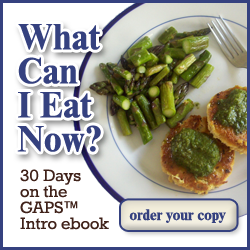

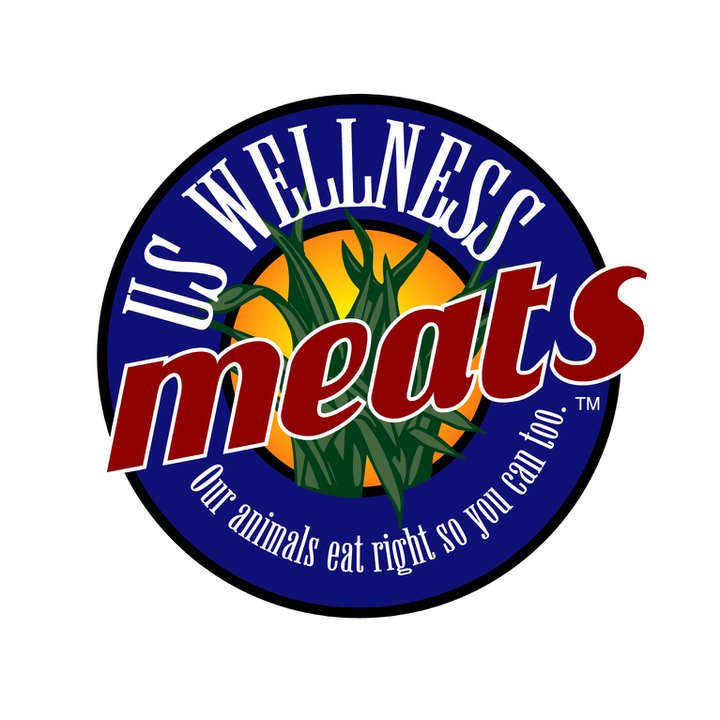
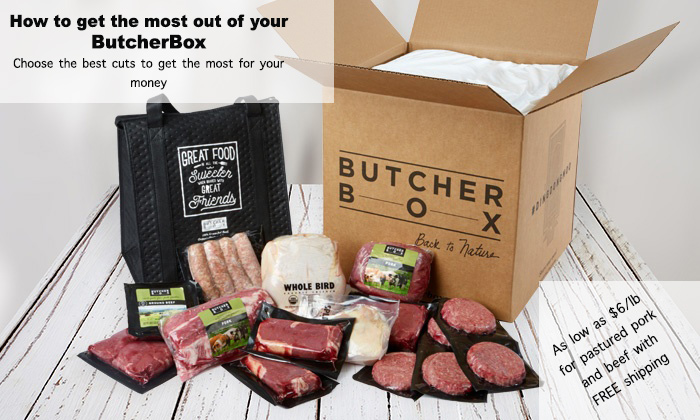
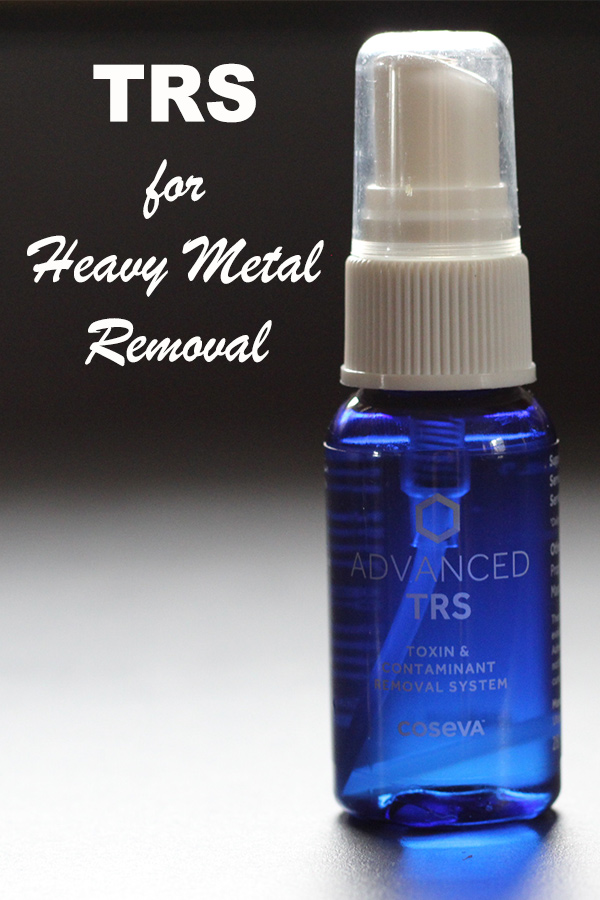

Thank you for this … so concise & simple.
Can GAPS diet be done Vegetarian?
It can’t, unless you are ok with chicken stock or possibly fish stock. The Body Ecology Diet is primarily vegetarian and similar to GAPS though.
Its REALLY unhealthy to be a vegetarian. I was for over a decade and am VERY sick now.
We have many vegan and vegetarian friends…NONE of them are healthy and all of their children’s teeth are rotten. But you can’t tell them anything. When you believe that one life form is more sacred then another you can’t help but get in trouble….but when you deny a bodies needs and natural way, you will for sure have problems.
I have been vegetarian/ vegan all my life 40 years I have no health problems what so ever have never been to hospital (only to visit others) had all my baby’s at home have not seen a dr in 15 years never not even for a cold. my children 2,3,5,8 have only had one bout of flu and chicken pox that’s it none of us have one filling in our teeth ….not one I have never had one not in baby teeth or adult teeth, I did have 2 wisdom teeth removed. I have many vegan and many vegetarian friends some are sick most are not.
it depends what u eat coke and chips are vegetarian but are not healthy. I know some very unheathy sick meat eaters 2 I don’t think u should white wash all vegetarians into one box and say oh they are sick it must be because they are vegetarian.
I’m glad you said something. I know sick and healthy people as well, some vegetarian and some meat eaters. That argument is very old and out dated. If you eat like crap your are going to look and feel like crap. Veggies or meat. Both can be very bad for you. Balance is the answer.
I agree with what you are saying totally. Being vegetarian isn’t the problem it is what you eat and drink that is the problem. There are many vegetarians and meat eaters who have the most diets and they suffer many health problems. Crap in Crap out!
I have been a vegetarian all of my 63 years, I suffer with hypothyroidism. That is though nothing to do with being vegetarian. I come from a family of meat eaters and each generation suffers hypothyroidism. I am not a vegetarian by choice but simply cannot eat meat or fish for some reason; though my mother tried to force feed me as a child and finally gave up as meat just made me ill.
The fact is vegetarian diet is a healthy diet and generally vegetarians live an average of 7 years longer than meat eaters. That fact has been scientifically studied.
I don’t have a problem with people eating meat or fish, though I think most people eat too much meat and should moderate it by eating some vegetarian meals. However, the interesting thing is all mammals manufacture in their body Vitamin C. This is vital particularly for meat eating animals and indeed all meat eating animals manufacture their own vitamin C, since where else would they get it otherwise?
In excess of 4,000 mammal species on the planet make Vitamin C but there are just 5 exceptions to this; Fruit eating bats, Guinea pigs, Capybara (largest rodent, closely related to guinea pig), 2 primates: the Leaf eating monkey and Humans. Since all 4 of these are vegetarian, then it is likely that humans are also vegetarian. We would not survive without manufacturing vitamin C as a meat eating animal in the primitive world. We know that scurvy, (a lack of vitamin C) kills. In the UK in 2014 a young boy died of scurvy. Vitamin C enables animals who kill for food would not heal their wounds if they did not produce vitamin C. Even scavenger animals produce vitamin C. However, whether you argue we are herbivore or omnivore the fact is we need a healthy vegetarian diet in order to be healthy. For those who think we are omnivores then you should add meat occasionally rather than form every meal around large portions of meat. Our body isn’t built for eating meat.
So if you are ill due to your vegetarian diet then you are obviously eating the wrong sort of diet. Junk food and starchy carbohydrates do not form a vegetarian diet and over time if that is all you are eating alongside manufactured fizzy drinks, then no wonder you are ill.
Agreed! I’ve been a vegetarian almost vegan for 22 years and I am healthier than anyone I know. When you go vegetarian or vegan it’s all about educating yourself. It’s balance and vegan supplements. My BP is actually low and everyone else in my families history is high as soon as they get into their 40’s. I’m now 46 and still have low BP. I just had blood work and it came back great except my D. I kinda knew I was not keeping up with my D out of laziness. Started taking a D 2 vegan supplement and I feel so much better. So it’s all about how you handle your diet, exercise and supplements. When I accidentally eat a meat product (very rare. Twice in 20 years) bloomin onion to be exact it tasted awful like old dried blood and I got sick, nauseous and threw up after one bite. People who are used to meat. Can’t see it’s really awful compared to fresh organic Whole Foods. No meat is without an impurity. It’s coming from an animal. The animal at some point ingests air borne run off toxins, they’re treated with vaccines(not antibiotics) by farm laws, etc.
I’m so happy I don’t eat meat for so many reasons. It feels great!
I was vegetarian from age 11 until age 26. When I became severely ill and almost died from Ulcerative Colitis. It took me nearly three years for anyone in the medical profession to take me seriously. I was unable to even drink water I had become so unwell. I was admitted to hospital finally, give blood transfusions, iv steroids and iv antibiotics (I know all this stuff is bad, but it did Dave my life). As I grew stronger, I didn’t want oats or tofu, I craved chicken and fish! Whilst I do not believe being veggie was the only factor in my ill health, it played a huge part especially at ages when body is still developing. And I’m blood type A so if anyone believes in that eat right for your type it’s nonsense! :)
I was a vegetarian for 36 years (since age 12) and am now suffering the consequences of eating such a “healthy” diet. Practically every system in my body is negatively affected. I have no doubts whatsoever concerning the long road to recovery ahead of me. Thank you for this informative website.
I was a vegetarian for 25 years the last 7 vegan. My homeopathic dr. insisted I eat at least chicken, my health was so poor. When I was a vegetarian/vegan, I over did soy and wheat (gluten) to the point I am now intolerant of both. As well as eggs, dairy,refined sugar and numerous vegetables. The GAPS diet now has me on the right path. I do not enjoy eating chicken, but at the point in my health I don’t have very many options. The bone broth is the best “medicine” there is!!! Along with coconut oil and other good fats, I feel better than I have in years.
Are you sure you’re sick because you were a vegetarian? From what I’ve read, it’s supposed to be healthier for you to be a vegetarian. What is your health problem?
The vegetarian debate is a fascinating one, I also am also a recovering vegetarian (26 yrs). I think that most vegetarians are very health conscious and become vegetarian or vegan with positive and healthy intentions. (I stopped eating trans fats in 1975.) Yes, if you get lots of greens and fresh fruits and vegetables, that is a healthy way to get vitamins and minerals. However if you have any health issues, stress etc, if you have an injury, or a combination of life’s stressors, that vegetarian diet that sustained you, may not be able to support the need for extra nutrition that handling stress requires. For me the final clarity came from two different articles; one saying all women who have cancer lack a certain profile of vitamins and minerals; then, another article came showing the profile of vitamins and minerals found in saturated fats (what we had all been told to avoid) . The two lists were nearly identical! They came from completely different sources, one the medical establishment, the other a paleo type forum. I was then convinced of the necessity of eating a full range of foods. The other problem I had was weight gain. I was always hungry, and I was groggy. I craved fats and most of those contained either cheese or sugar. I was aware and followed much of the Weston Price nutritional recommendations ( I also ate eggs and fish). I read Gary Taubes book,” Why we get fat.” and began a year of paleo eating. That year on the ketogenic diet was the first time in 25 years that my liver was off carbs and able to release fats! Calories are not just calories, that is for sure.
Love how you explain this, helps me and the kids learn how to explain it to others. We made honey meringue cookies!!! Success!
The way you break down the GAPS diet is great. Thanks for the info! One thing that concerns me is the recommendation of palm oil use. Palm oil plantations are the biggest contributors to the massive population decline of orangutans. They are on a fast track to extinction. There are plantations that claim to be sustainable, but there are many people who question these claims. If you would like to keep orangutans around, skip the palm oil:) “Rainforests are being cleared at the rate of 300 football fields per hour to make way for oil palm plantations.” from http://www.orangutans.com.au/Orangutans-Survival-Information/About-Palm-Oil.aspx
What kind of milk you drink on GAPS diet? Also, can you eat yogurt?
Thank you,
Dee
I have a question. This looks like it might be good for my grandson but what if he won’t EAT any of the things on this list. He is very texture sensitive so processed foods are the only items he will eat. I know there has to be an alternative but short of getting him hungry enough to eat items he dislikes, what are the options?
That’s a really common question- I addressed it here :) https://healthhomeandhappiness.com/my-child-needs-gaps-but-wont-even-touch-that-kind-of-food-how-to-get-kids-with-sensory-issues-on-the-gaps-diet.html
Fantastic website you have here but I was curious if you knew of any community forums that
cover the same topics talked about in this article? I’d really love to be a part of community where I can get comments from other knowledgeable people that share the same interest. If you have any recommendations, please let me know. Thanks a lot!
Search Facebook for GAPS kids or GAPS Families. Great support groups!
What if you are allergic to eggs?
I NEED HELP ASAP!!!!!!!!!!!!!!!
I have been on the Paleo diet for almost a year now and have seen some great results in putting my Fibromyalgia and Crohns into remission for the most part. I also have Polycystic Ovarian Syndrome. ALL of these things cause me BAD chronic inflammation, which I now feel I have somewhat under control…still have some acne and most of my eyelashes have fallen out and continue to do so. :(
But worse than all of these is my ridiculous problem with FOOD ALLERGIES/intolerances!!! I am literally allergic/intolerant to most of the foods that Cara has listed above, including meats like turkey, chicken and pork. It seems I get allergic to something new now every couple weeks! I am literally running out things that are safe to eat. I also have recently discovered I have problems with fructose malabsorbtion, so ALL of those foods are out as well.
The scariest thing is that my reaction to these things is not just an upset digestive system, I get that along with a host of other classic allergy/leaky gut symptoms as well, but a horrible problem with BREATHING.
Basically, if I have one bite of these foods I start getting a weird warm flushed feeling within minutes of eating it and then I know its coming……I feel like I’m having a severe asthma attack or something and I get dizzy and feel like I’m not getting enough air. If I don’t take 2 Benadryl RIGHT AWAY I will quickly be on the edge of passing out. THIS IS THE SCARIEST THING EVER!!! It feels like death.
Keeping myself calm and distracted can sometimes help as well because, while it is not CAUSED by anxiety, feeling anxiety and afraid at the time of a bad reaction makes it much worse. I have been to the E.R more time than I care to think about, and they never find anything wrong with tests. And of course they’ve never even asked me if I have allergies…..not much help there.
If anyone can give me any advice I would greatly appreciate it. I have a husband and little ones to take care of and I NEED TO RESOLVE THIS!!!
Note: I was on the SCD for about 6 weeks when I noticed my Fibromyalgia pain greatly decreasing, and that’s how I knew a grain free diet like Paleo was the answer for me. But I think that this diet is only keeping things under control for me and not totally healing my gut. My stabbing Crohns pain and loose stool never went away while on SCD though, I think because I was still consuming unknown allergic foods and an unknown problem with fructose malabsorbtion.
I really need to start SCD or GAPS as soon as possible but I’m afraid I will TOTALLY FAIL if I can only eat a handful of the allowed foods!! :(
I’m so tired of seeing all these great recipes that are ‘SAFE” for these diets and not being able to make any of them. All my ‘safe’ cookbooks/ebooks/meal planners are useless.
I was doing a rotation diet within the Paleo diet for the last 6 months or so but am STILL getting allergic to new things all the time.
We really want to have another baby in the near future, but I am starting to feel like some kind of irresponsible, selfish person for wanting that while having such ridiculous problems.
ANY ADVICE FOR ME???
Nicole-Have you considered that you could be allergic to soy? A lot of livestock are fed soy ad that is what popped into my head, when you mentioned pcos.Are yourmeats high-quality?Could you be sensitive to corn?
Eggs might be something you could test yourself with. It’s semi easy to find soy-free egg. An egg that is advertised as vegetarian diet but doesn’t specify soy-free most likely has soy in it.
My phone is having formatting issueson this box. Sorry.
Nicole, I have had similar problems only I don’t have breathing issues, I get debilitating headaches. After years of being on more pain meds, antidepressants, etc. I finally found NATE. It is Nambudripod’s Allergy Elimination treatment. I was allergic to so many foods, chemicals, etc. This treatment does elimate allergies. It is a process, but I got my life back. I still need to deal with digestive issues, which is why I am looking at this site. You can look up NATE.com and look for a practitioner. You want one with advanced training. We moved last year and I was able to find a new practitioner where we moved. If you work with NATE and diet, it will help. And I am finding that although my allergies are greatly diminished, I still need to heal my digestive system.
Have you ever been checked for alpha-gal allergy? The research on this is mainly being done at Univ. of Virginia. Seems to be caused by the lone-star tick bite…which you may never even have noticed. Have a cousin who has this and cannot eat ANYTHING from a mammal….Pls. have this checked!
Nicole, I went to a nutritionist a few months ago who diagnosed me with leaky gut as well as kidney problems and put me onto a detox diet, with natural medications, plus basically a paleo diet. I’m not into the third stage and it’s all going well but I think it might be worth trying visiting someone like that. I’m feeling great and have lost around 9kg (19lb). Good luck with everything.
can u eat brown rice
Nicole, I concur with Jaimies’ concern about corn or soy allergy/sensitivity. I and my sisters and their kids all have varying levels of sensitivities to corn and corn products. I had to retire from service in the military because the systemic inflammation and pain increased so much after eating the food available during my activation for 2 years. It took three years after I came home to figure out just what was going on. After my youngest sister had her son some severe reactions it finally clicked for her. A year or so later she and I were talking and it finally starting occurring to me that it might be a major contributing factor in my ill health and pain. I have found eating any milk or beef from cattle that are fed corn will affect me. Now I only eat moderate amounts of beef if it is grass fed/finished. I don’t find the same difficulties with pork or poultry meat, though eggs upset my stomach.
Hi Nicole,
It’s been over a year since you posted, are you doing any better? I came across this article by someone who had similar food allergies to just about everything, and she cured it with diatomaceous earth! It’s supposed to help respiratory issues as well. Check it out : http://www.ibreatheimhungry.com/2013/02/foodless-friday-health-benefits-of-diatomaceous-earth.html
A pure water fast or apple diet (recommended by Edgar Cayce – see edgarcayce.org) can help bring a dramatically better balance to your body. Veterinarians put animals (cats, dogs etc) on a pure water fast until the disease symptoms stop, when they are sick with just about anything, and a book I read by an early 20th century yoga master advised treating most human illnesses by doing a strict water only fast (until the negative symptoms stop). The added benefit of the Edgar Cayce apple diet is that besides rinsing the digestive tract with water for three days, the apples (Jonathon or Delicious brand) pull the stored toxins out of the system quickly and the water washes them away fast (if you drink enough water and especially if the water is warm or hot). Once when I did that three day apple diet at a time when I also tried to quit smoking – after only 36 hours I was no longer addicted to nicotine and the first cigarette I lit up after waking up tasted awful (like the first cigarette I had ever tried) so I was almost instantly free of cigarettes after a 20year addiction. The misplaced parasites which cause most digestive problems are starved and eliminated by this type of fast and when you start eating again (carefully for the first few days – fruit juices first, then gradually vegetables and proteins) your system has been cleaned out and has a completely fresh, new balance. Combine this with castor oil packs over the abdomen (another Edgar Cayce recommendation) which helps to clean out the liver, gallbladder, pancreas etc…, and you are off to a brand new start with a much healthier condition throughout your body. My experiences with both simple water fasting (which can be done for as much as 2 months without harm -depending on fat reserves – which was discovered by studying concentration camp survivors many of whom lived on nothing but water for prolonged periods and survived that without any long term effects. If you’re still having difficulties I would suggest that you study the Edgar Cayce recommendations by going to the website edgarcayce.org or by picking up a copy of the health guide based on his readings. The Edgar Cayce Handbook for Health Through Drugless Therapy [ http://www.alibris.com/The-Edgar-Cayce-Handbook-for-Health-Through-Drugless-Therapy-Harold-J-Reilly/book/1897495 ]. I don’t work for that organization but I’ve studied a lot of the information and have found it very helpful.
P.S. I am so sorry for filling up your page so much. I didn’t realize it had turned into a small book!
My apologies.
As an additional note: I have also cut out all nightshades…..tomatoes, potatoes, peppers etc. and my stomach went from looking 6 months pregnant everyday for the past 3 years, to being flat again. Wow.
If anyone can help me figure out how to survive this diet while not being able to have most of the allowed foods…..I thank you!
Blessings,
Nicole
Hi Nicole,
I’m so sorry to hear of your suffering. Are you able to eat probiotic foods such as sauerkraut and yogurt/kefir? Can you eat fish (wild caught only, farm raised are likely GMO)? What about lamb (good choice for GAPS because it’s high in fat)? Very important to get your meat from an organic, pastured source. Are you taking a good probiotic? Are you eating ONLY organic and non-processed food? What about personal hygiene & cleaning supplies? There are numerous gluten-free, SLS-free, flouride-free products available. Gotta think about what you’re putting on your skin, in your mouth, on your hair, in your laundry, etc. Maybe your environment is toxic.
I’ve also been in a very bad way w/ food allergies/intolerance due to leaky gut syndrome. I’m finding that as I get my gut more balanced, I can deal with more food options. I am now 2+ months into the GAPS Intro diet and seeing fantastic results. At this point I can eat only a few different foods, so I repeat the same menu every couple of days, which gets a bit repetitive, but I’m willing to do anything to heal my gut and get my life back! Hope you get some relief soon!
M.E.
I would like to know why honey is ok to have?? Surely the sugars will just feed the pathogens and bacteria?
She mentions it is because it is quickly absorbed by the body, other sugars are not and go on to feed the bacteria. Raw honey is also full of nutrition, while many other sweeteners, including heated honey are not.
Hey — I’ve been trying to find out — is it safe to have kids (get pregnant) while on the GAPS diet? Someone told me it was bad in the beginning stages because the body is detoxing, but that’s all I heard. Do you know anything? Thanks so much!
I wrote about being pregnant and breastfeeding on GAPS, there’s a good discussion about it in the comment section too https://healthhomeandhappiness.com/can-i-do-gaps-if-im-breastfeeding.html
Hello there, just became alert too your blog through Google,
and found that it is really informative. I am gonna watch out
for brussels. I will be grateful if you continue
this in future. A lot of people will be benefited from your writing.
Cheers!
you’re really a good webmaster. The web site loading velocity is incredible.
It seems that you are doing any distinctive trick.
Also, The contents are masterwork. you have performed a great job on this
matter!
I was curious iff you ever thought of changing the structure oof your blog?
Itss very well written; I love what youve got to say. But maybe you could a little more in the way oof content
so people could connect with it better. Youve got an awful lot of text for only
having 1 or 2 images. Maybe you coupd space it out better?
Hi there, all the time i used to check weblog posts here early
in the morning, since i like to gain knowledge of more and more.
I cannot afford the book! It isn’t in Kindle :(
Margaret
I am on The Specific Carbohydrate Diet and looking into the GAPS protocol. I read that you aren’t suppose to eat raw honey, only pasteurized honey due to the pollen in raw honey. It can negatively effect the immune system in your gut which could side line your healing. Any thoughts on this?
Thank you so much for all the great recipes :)
My son is allergic to all nuts and dairy how would this diet work for him?
https://healthhomeandhappiness.com/gaps-faq-i-cant-eat-eggs-i-cant-eat-nuts-can-i-still-do-gaps.html Many people find that going through the GAPS intro heals their allergies too.
Kathleen, You may find some of your answers by looking at the Auto-immune Paleo Diet. A Nutritional therapist, Mickey Trescott, wrote this. It has helped me and many others. I hope you find good support.
It seems the main point of gaps is to heal the stomach…I’m allergic to much that is on thé diet. All dairy, wheat, eggs, coconut, ginger, many spices,…bananas, all squashes, nightshades, soy, just to name a few…I don’t really want to limit my diet even more…I try to eat whole foods, meat and rice and veggie, grits, oatmeal, rice bread, and rice based food, beans etc…not sure other than finding purer versions of what I eat now…what do u think.
I’m researching GAPS because since having my son 8 months ago my skin has gone bonkers with eczema. I am still nursing him and am not sure if GAPS is recommended while nursing.
Hi, I see there is a lot of talk about being vegetarian. I was a vegetarian baby (by choice, to my mothers horror), I apparently just wouldn’t eat it no matter how much she tried and have been vegetarian for most my life. The problem is I don’t like the smell/taste/texture and the concept literally makes me gag when I do try. I don’t think I could ever eat meat.
Hi Nicole, you might get a tick bite. Google about the connection of tick bite and meat allergy. It cause an allergic reaction to any meat products. Hope it will be resolved soon.
There is alot of uneducated comments on a vegetarian diet on here. You can be a veg and eat crap instead of meat just like a meat eater can and be ill
What if you cannot buy grass fed or organic food bc of finances?
Hi Kay, you can still do GAPS :) We did! You can read more about that here. How Important is Buying Organic on the GAPS Diet
Hi cara,
We started to prepare our son to this diet.
We wanted to ask if we can add to the sauerkraut apple so it will be a little bit sweet in the end of the process so he will agree to eat that every day.
Hi. Is this able to be done with an Alpha Gal allergy and cure it?
I really enjoyed the video on Food and Autism. I have a grand daughter born with Autism and until then I never knew I had Aspergers. It was through my daughters journey helping her that I learned more and kept thinking wow I have that. In the age that I grew up in children behaved or were spanked so you learn in order to not get spanked but you did things under the table. Like stemming. My grand daughter did not get a diagnoses til she was six and my daughter fought hard with the county and her doctors to get them to listen. Because my grand daughter could talk and walk they thought she was fine. Once my daughter warned a doctor in a hospital that my grand daughter was autistic and she would have to help him do something and he looked at her and said but she talks. so the medical community can be way behind the times.
She would not make eye contact, she would not walk on carpet, she would not eat loads of things cause of the texture, she hated loud noises so eating in a restaurant or taking her to the mall was not happening, she would hide under the table if company came to the house, She is and was brutally honest and would even tell on herself of what she would do if candy was left where she could reach it, she would blurt out her honesty like someone was fat not understanding this was not done and then wondered if that person knew they were fat, and the list goes on. Now she had music therapy, physical therapy, occupational therapy, art therapy and speech therapy. She can do math like it is nothing but learning her letters and reading was a long process. All these therapies have helped her do so much more than ever before. It is so important to get that for Autistic children.
My grand daughter now paints the most amazing things and builds me houses out of cardboard and with things she finds around the house. We buy tape at the dollar store cause she goes through lots of it building things. She likes Barbies but not to play with but to design their house and clothes and thinks talking to them is really dumb and creepy she tells me. LOL. Her ability to paint, play music and design is off the charts. But reading she still works on.
I was a reading some of the comments and the debate of vegetarian versus meat eater. I was a vegetarian for 20 years from the time I was 16 and I did it cause I made the connection between my food and my pets. It bothered me and having Asperger made it really bad and my family gave me hell for it. As for my teeth, well they are in bad shape and I had brittle teeth that broke and now will need dentures in my old age. I do not think it was the vegetarian diet though. I think it is part hereditary and part poor nutrition as a child. I had no mother to teach me about how to eat and we were very poor so sometimes dinner was french fries with butter and ketchup or ketchup bread with mayonnaise. My father had no clue about how to raise kids. I did not know coffee with cream was a acceptable breakfast till I went to school cause that is what my father gave me. We didn’t have cereal very often as that was a luxury and sometimes we had eggs but mostly for dinner. So I didn’t get the right foods early in life and my parents had bad teeth too. The early years when the teeth are in the gums developing are important. But so is your family DNA.
I think whether to be a vegetarian or vegan or meat eater should be your conscious choice. How you feel about it. However I will say I now am allergic to eggs, soy, and peanuts to be honest but almost everyone of my siblings have issues with eggs. Either stomach cramps from hell and flu like symptoms for about three days or they go to sleep. Eggs make them sleepy like really sleepy. Within 30 minutes of eating they have to take a nap. They are foggy minded too.
Food is so important and in the early years of development most especially. Food can cure some people and there are all kinds of diets because there are all kinds of people. Not one size fits all in the diet area.